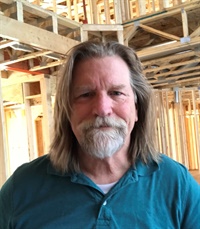Information
A Comprehensive Look at the Framing Provisions of the Minnesota Residential Code and More
Length: 6 Hours
This course is based on the 2020 Minnesota Residential Code and portions of the 2020 Minnesota Energy Code (that addresses insulated sheathing options). It covers both the basics of the code and provides a deep dive where needed. From the point of view of the Building Inspector out in the field, this course addresses the framing of new single-family homes, additions, remodel projects and fire-damaged structures. It focuses on both conventional framing and engineered components, submittal documents, live and dead loading, framing limitations, alterations, notching and boring, treated lumber, fasteners, bracing and both the energy and building code criteria for insulated exterior wall sheathing. This course also covers foundation wall connections to floor systems and pan flashing.
Course Outline- Introduction
- Design Criteria
- Wind Loads
- Snow Loads
- Floor Loads
- Prescriptive Construction
- Wood Structural Panels
- Protection Against Decay
- Fasteners
- Plan Review
- Application For Permit
- Construction and Inspection
- Placement of Permit
- Information on Site
- Inspections
- Engineered Design and Construction
- Truss Drawings
- Roof Live Load
- Bearing Location
- Bearing Support for Floor Trusses
- Detail Examples
- Truss Drawing Detail Examples
- Truss Connection at Bearing
- Lateral Support - Trusses
- Truss Strongbacks
- Truss Drawing Detail Examples
- Alterations To Trusses
- Engineered Product Considerations
- Truss Considerations – Bored Holes
- Lumber Identification
- Framing Provisions in the IRC
- Sawn Lumber Identification
- Foundation Anchorage
- Fasteners
- Solid-Sawn Lumber Floors
- Lumber Identification
- Floor Joist Spans
- Bored Holes
- Notches
- Lateral Support
- Engineered Floors
- Draftstopping
- Exterior Walls
- Wall Framing
- Wall Framing – Engineered
- Wall Framing – End jointed lumber
- Wall Bracing
- Wall Bracing and Foam Sheathing
- Wall Bracing and Foam Plastics
- Notches and Bored Holes
- Top Plate Framing
- Fire-Blocking
- Fire-Blocking Materials
- Tuck-Under Garage Scenario
- Fire-Blocking Materials
- Roof Framing
- Roof Rafter Tie-Down
- Roof Truss Uplift Resistance
- Two-Ply Roof Truss (girder)
- Gable End Support of Fly Rafters
- Fire Damaged Houses and Considerations for Structural Repairs
- Structural Considerations
- Energy Code Considerations
- Adding a Second Floor Above an Existing Garage
- Replacement of Existing Sleeping Room Windows
- Emergency Escape & Rescue
- Safety Glazing (tempered glass)
- Energy Efficiency
- Foundation Wall Connections to Floor Systems
- Pan Flashing of Windows and Doors
- Energy Code Submittal Documents
- Submittal Documents
- Submittal Documents for Permit
- Review of Building Plan
- Thermal Envelope
- Foam Plastic Insulation
- Definitions
- R Value
- Vapor Retarder
- Air Barrier
- Foundation Insulation
- Basement Walls & Slab-On-Grade
- Basement Wall Insulation
- Exterior Draining Insulation
- Exterior Non-Draining Insulation
- Slip Sheets & Manufacturer’s Spec
- Slab-On-Grade Insulation
- Crawl Space Wall Insulation
- Crawl Space Ceiling Insulation
- Crawl Space Ventilation
- Crawl Space Access
- Basement Floor Insulation
- Rim Joist Insulation
- Floors Above Unconditioned Spaces
- Cantilevered Rim Joists
- Cantilevered Rim Joist Insulation
- Interior Basement Wall Insulation
- Above Grade Wall Insulation
- Exterior Wall Insulation
- Penetrations At Top Plates
- Wall Insulation during Remodeling
- Fenestration U-Factor
- Window Replacements
- Ceiling Insulation
- Third-Party Evaluation Reports
- Evaluation Reports for Compliance
- Summary of ESR-2142
- Energy Summary
Learner Objectives
- Be able to identify the intent of the building code and related documents and industry standards.
- Be more knowledgeable about the use of conventional lumber and engineered products.
- Be able to locate building codes related to specific scenarios.
- Recognize the relationship between the designer, builder, framer, other trades on site and the building inspector.
Testimonials
"Well-organized real-world solutions taught by professionals with field experience." Robert Schmitt, Premium Construction, LLC
"Great course. Peter has great knowledge and experience. I am glad that I took this course." Jay Lindahl, Hooter's Lumber, Inc.
"I will take more classes because of the information." Kelly Freidlund, Freidlund Enterprises Inc.
"A good refresher on how things are done and from an inspector's point of view." Rickey Ites, Rickey Ites Construction
"I liked the detail in the wealth of photos and corresponding handout. I appreciated the knowledge and delivery Peter brings to the course. He explained the code well, in real world examples. Gave me solutions and ways to alternate solutions if needed." Andy Wallace, Andrew M Wallace Construction LLC
"I wish all building inspectors had the temperament of Peter. Lots of useful information." Peter Bjerke, Quality Home Transformations Inc.
"Peter is one of the most knowledgeable and relatable speakers on building topics." Tom Christianson, Enerjac Construction, Inc.
"Very easy course to take. Well done." Jeremiah Schunk, Jeremiah Schunk Construction LLC
"This course is a great review for building code." Lindsey Cartwright, Cartwright Construction
"This course was a great way to obtain the required continuing ed in a quiet setting at my own pace." Michael Peters
"This course is great! Experienced and new contractors alike can benefit from taking it- both in having your projects have more cohesive systems between foundation, framing and building envelope, but also there are a few things I learned that are code approved but not necessarily common knowledge, which means that going forward, I might be able to save $100 here or $500 there by not going over the top on clips or barriers that aren't required, and maybe not even helping." Benjamin Katororsz, Construction Con Dios, LLC
"Peter Kulczyk brings in-depth knowledge of areas of the code that most contactors have questions on." Jim Davis, SES Renovations
"This is a good course." Michael Waring, MW Build LLC
"Peter was very good at presenting real situations and not just reading the slides." Lori Reese Earley, Wonderwoman Construction & Electrical
"This online course was better than any in-person course I've taken in almost 20 years!" Ray Topalof, Integrity Remodeling & Design Group, LLC
"Great instructor and right to the point." Glenn Frisell, Lakes Area Concrete and Construction, Inc.
"I like the logic-based approach to the end game. We are all playing for the same team (most anyway)." Chad Walters, Contractor
"I liked the general friendly attitude the instructor had and the knowledge he has of the topics he spoke about." David Landis, Landis Construction Inc
"Very straight forward and easy to follow along. Gave me additional awareness of several codes." Roger Klemm, K&K Quality Construction, Inc
"I have been in construction my whole life, design, building, and inspections. This course is an all-around education for all." Shawn Glapa, SMG Drafting & Design, LLC.
"Peter is an extremely knowledgeable instructor who laid out the course well. His thoughtful perspective as a building inspector will certainly be helpful as I gain experience in multiple stages of residential construction." Zach Lee, Twin Cities Habitat for Humanity
"Great course." Benjamin Schieber, Schieber Builders LLC
"Highly recommend the course." Jason Witt, K A Witt Construction, Inc.
"Excellent course. I couldn't stop watching it. This course gave me useable knowledge in the field." Perry Hartwig, Roof Co. N.A.
"Very helpful update and reminder course." Jon Richardson, Richardson Renovation LLC
"Very informative and a nice way to brush up on codes and current construction techniques." Aric Barnett
"Peter was a very knowledgeable instructor with vast amounts of 'boots on the ground' experience." Nathan Halonen, Halcon Built
"Great course and really good instructor!" Justin Lang, Lang Builders, Inc.
Quiz Info
In order to receive continuing education credit(s), you will need to take a 10-question quiz after each hour of the course. To pass each quiz, you will need to achieve a score of 70% or higher. If you are unsuccessful, you will have an opportunity to repeat the quiz. Once you have successfully completed the course, you can download your continuing education certificate(s) showing the credit(s) that you have earned.
Credit Info
This course has been approved for six hours of MN residential contractor, remodeler, and building official continuing education by the Minnesota Department of Labor & Industry, including the required energy credit.
If you are eligible to receive continuing education credits, your information will be electronically reported to the appropriate agency within 3 business days of course completion.
Access Info
Your online course is accessible 24/7. The course will be available to you for 180 days from purchase date.
Questions and Comments
Questions and comments related to the curriculum for this course may be submitted to the instructor at education@housingfirstmn.org.
Peter Kulczyk, Peter Kulczyk, Building Official

Peter has three decades of experience in the construction and building code industry as a building inspector, author, educator and expert in residential building codes, energy codes and green building practices. His experience includes working on staff with the International Code Council (ICC), as an instructor with the State of Minnesota Department of Labor and Industry (DLI), as a Building Inspector and/or a building plans examiner with multiple municipalities, and in various positions with five residential and commercial construction companies in Minnesota.
Peter is certified by the International Code Council as a Building Inspector, Plans Examiner, and Green Building-Residential; By the State of Minnesota Department of Labor and Industry as a Certified Building Official and Certified Instructor; By the United States Green Building Council (USGBC) as LEED AP Homes.
Questions and comments related to the curriculum for this course may be submitted to the instructor at education@housingfirstmn.org.


